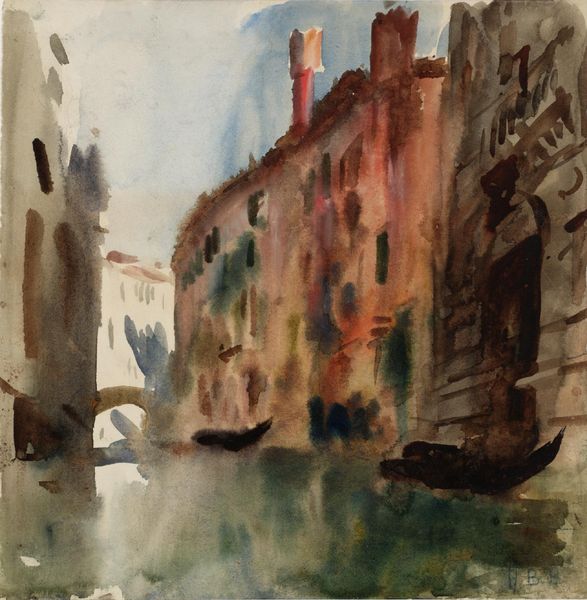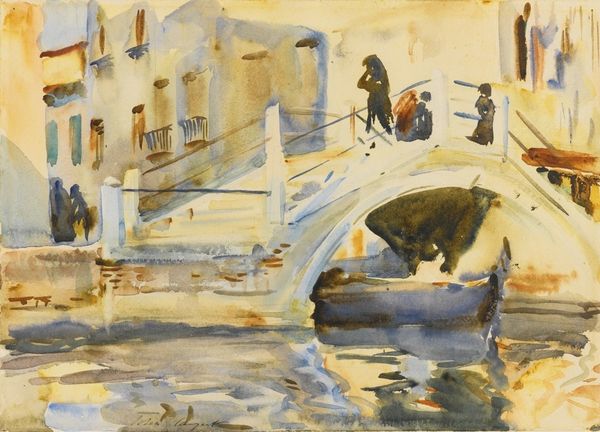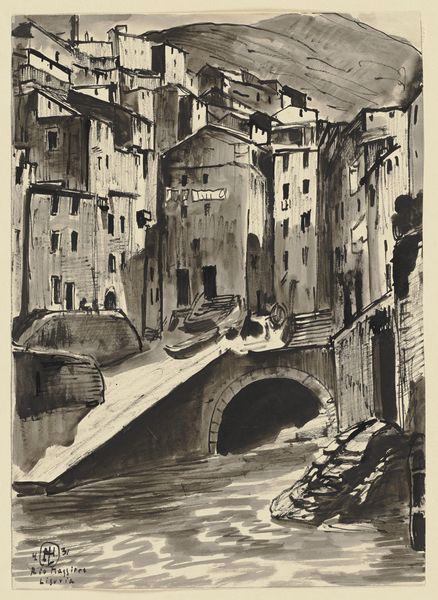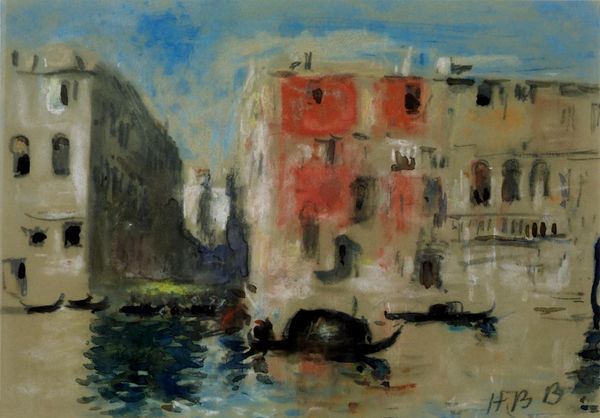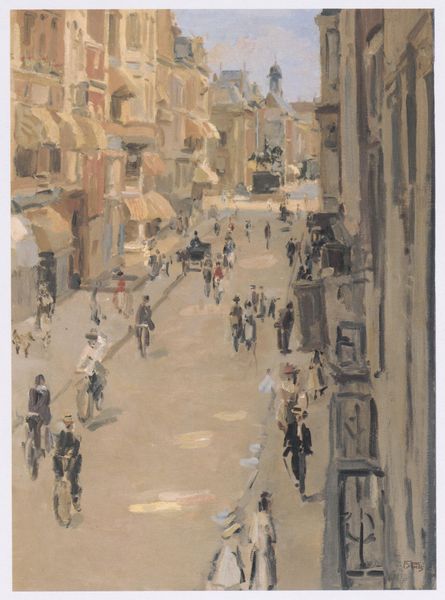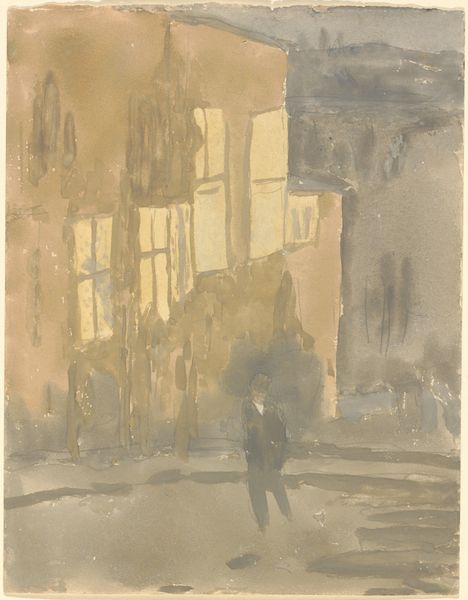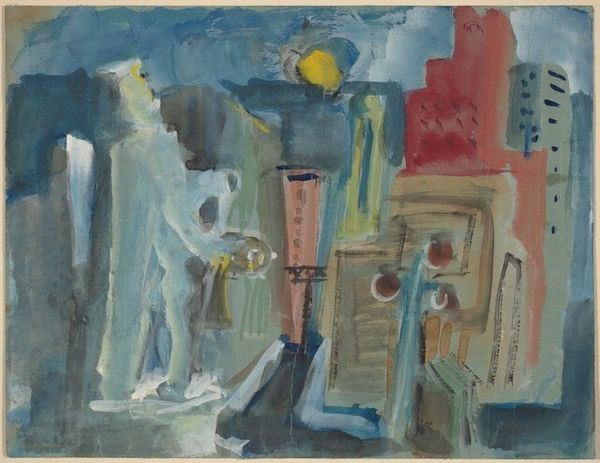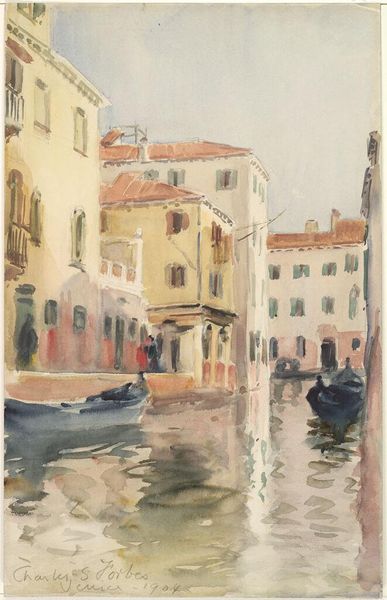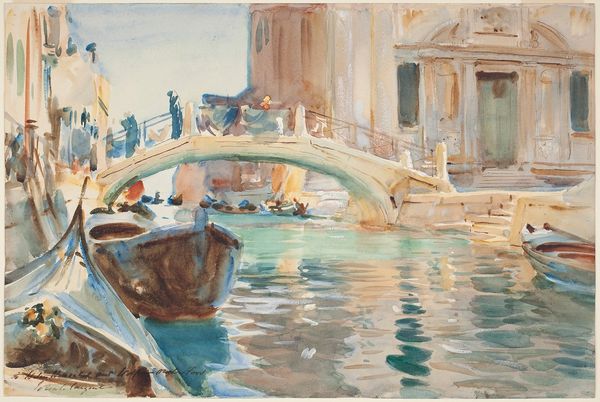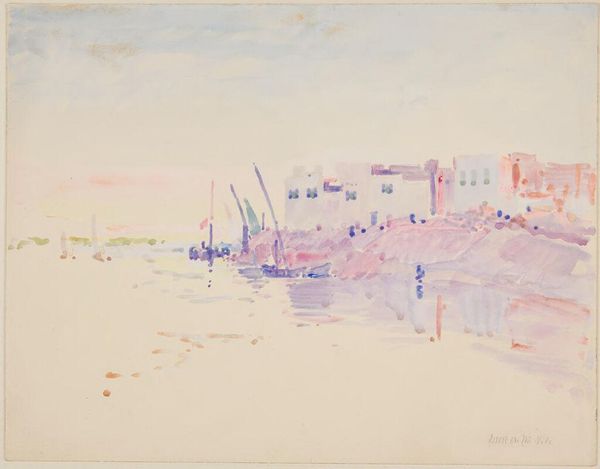
Copyright: Public Domain: Artvee
Editor: So, this watercolor by John Singer Sargent, titled "Rio di San Salvatore, Venice," made sometime between 1906 and 1911...it feels almost like a fleeting memory of Venice, really atmospheric. What strikes you most when you look at it? Curator: It's interesting you say "fleeting memory". Sargent, as an expatriate, painted Venice as both an insider and outsider. What do these hazy waterways and somewhat obscured buildings tell us about how Venice was marketed to tourists in the early 20th century? Was this a place that was actually understood, or consumed as simply the backdrop of our own experiences? Editor: That's a good point. I hadn't thought about the role of tourism then, and how that perspective would shape the artwork itself. It almost romanticizes it. Curator: Precisely. Venice itself was, and still is, very much a manufactured place through art, commerce, and political machinations. Note how he focuses on the gondolas, the almost exaggerated height of the buildings—it's designed for our gaze. What story is he selling? How complicit is he, or are we, as viewers, in perpetuating the myth of Venice? Editor: It feels like he's emphasizing the picturesque elements, almost at the expense of showing the everyday reality of the city. He presents this almost dream-like scene. Curator: And dreams, especially collectively held ones about places and people, can have very real social consequences, can't they? It can have influence, from urban development, to local economies, and how we remember people, places, and movements. Editor: Definitely. It makes me wonder about the power dynamic at play – the artist, the wealthy patrons, and the city itself being presented in a certain way. I appreciate the new perspective, considering its relationship to society instead of merely aesthetics. Thanks! Curator: Absolutely. Thinking about art this way helps us become more aware of the messages and biases embedded within the artwork itself. It goes far beyond its physical materials.
Comments
No comments
Be the first to comment and join the conversation on the ultimate creative platform.
